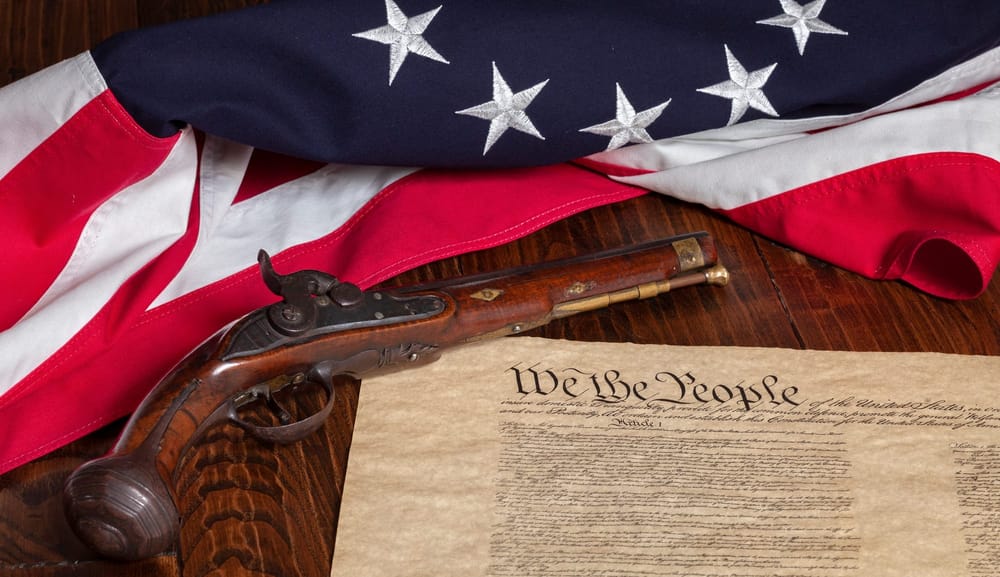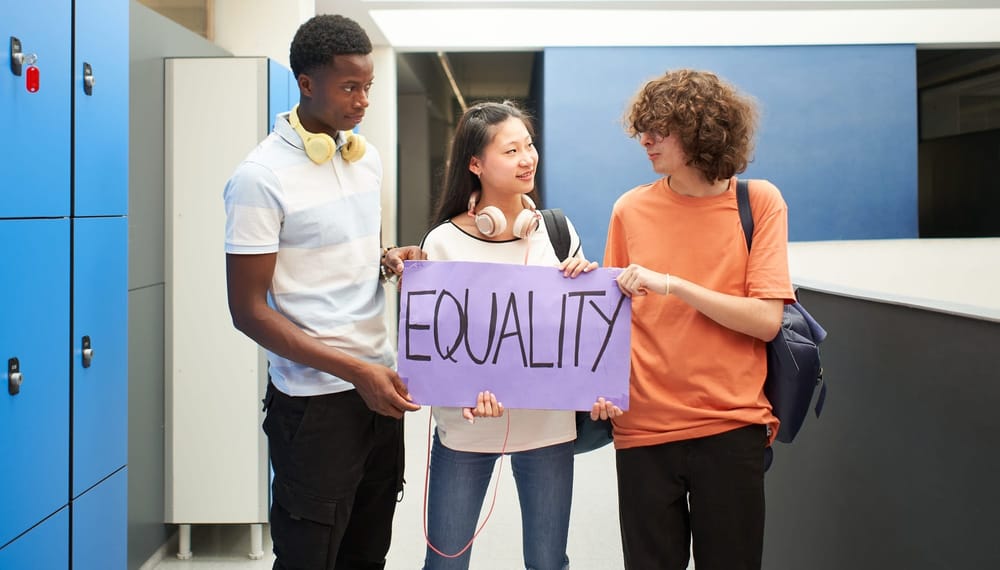The Second Amendment of the United States Constitution, enshrining the right to keep and bear arms, has long been a focal point of legal discourse and public debate. Its interpretation has undergone significant evolution, shaped by landmark rulings from the Supreme Court. These decisions have not only defined the contours of gun rights but also influenced broader discussions on individual liberties and state powers in contemporary America.
This comprehensive analysis examines pivotal Supreme Court cases that have profoundly impacted the interpretation and application of the Second Amendment. By exploring the historical context, judicial reasoning, and subsequent implications of each case, we aim to provide a nuanced understanding of how these rulings continue to influence gun rights and regulations today.
United States v. Cruikshank (1875)
The significance of United States v. Cruikshank (1875) lies in its long-lasting impact on civil rights jurisprudence. By restricting federal intervention in cases of private discrimination, it effectively weakened the federal government's ability to protect African Americans from racial violence and discrimination during the Reconstruction era. This decision set a precedent for future cases, such as Civil Rights Cases (1883), which further curtailed federal enforcement of civil rights. It wasn't until later decisions, such as Brown v. Board Of Education (1954) and Heart Of Atlanta Motel Inc. v. United States (1964), that the Supreme Court began to expand federal authority to combat racial discrimination more robustly. Additionally, United States v. Morrison (2000) revisited similar themes regarding the limits of federal power under the Commerce Clause and the Fourteenth Amendment, reflecting ongoing debates about the balance between state and federal authority in protecting civil rights.
The Court's reasoning in United States v. Cruikshank (1875) was rooted in a narrow interpretation of the Fourteenth Amendment. The justices argued that the amendment did not extend federal power to regulate private acts of discrimination or violence. Instead, it was intended to prevent state infringement on individual rights. The Court emphasized that the Bill of Rights did not apply to the states and that the federal government could only intervene when there was a direct violation by state authorities. This decision significantly limited the scope of federal civil rights protections and underscored the principle of dual sovereignty between state and federal governments.
The case of United States v. Cruikshank (1875) arose in the aftermath of the Colfax Massacre, where a group of white supremacists attacked and killed numerous African Americans in Louisiana. The defendants were charged under the Enforcement Act of 1870, which was designed to protect the civil rights of African Americans under the Fourteenth Amendment. The legal issues at hand involved whether the federal government had the authority to prosecute individuals for civil rights violations committed by private actors, rather than state actors. The Supreme Court, in its decision, held that the Enforcement Act could not be applied to private conspiracies and that the protection of civil rights was primarily a state responsibility unless state action was involved.
Presser v. Illinois (1886)
The significance of Presser v. Illinois (1886) lies in its affirmation of state regulatory power over militias and its early articulation of the doctrine of selective incorporation, which would later be developed more fully in cases such as Gitlow v. New York (1924) and McDonald v. City of Chicago (2010). The decision also set a precedent for understanding the limited scope of the Second Amendment prior to its incorporation against the states, a topic revisited in District Of Columbia v. Heller (2007). By reinforcing state sovereignty in regulating armed groups, Presser v. Illinois (1886) contributed to the broader discourse on federalism and individual rights within American constitutional law.
In its decision, the Supreme Court held that the Second Amendment's right to keep and bear arms was not applicable to the states through the Fourteenth Amendment. The Court reasoned that the Second Amendment was intended to limit only the power of the federal government and not that of the states. Furthermore, the Court emphasized that states retained the authority to regulate military bodies within their borders to ensure public safety and order. The ruling underscored the principle that while individuals might have certain rights under the federal Constitution, these rights did not necessarily constrain state legislation unless explicitly incorporated.
The case of Presser v. Illinois (1886) arose from a challenge to an Illinois statute that prohibited unauthorized military organizations from parading or drilling in public with arms. Herman Presser, a member of a German-American labor organization, led a parade of armed men through the streets of Chicago without state authorization, resulting in his conviction under the statute. The legal issues at the heart of this case involved the interpretation of the Second Amendment and its applicability to state governments, as well as the scope of state power to regulate militias and maintain public order.
Miller v. Texas (1894)
In this case, the defendant's challenge to a Texas law prohibiting concealed weapons was rejected by the Supreme Court, which declined to extend Second Amendment protections to state laws at that time. This decision reinforced states' broad regulatory authority over firearms within their jurisdictions, a theme prevalent in late 19th-century jurisprudence.
United States v. Miller (1939)
The significance of United States v. Miller (1939) lies in its interpretation of the Second Amendment as being connected to militia service, which influenced subsequent jurisprudence on gun rights. This case set a precedent for understanding the Second Amendment in a collective context rather than an individual one. However, later cases such as District Of Columbia v. Heller (2007) and McDonald v. City of Chicago (2010) shifted this interpretation by recognizing an individual's right to possess firearms unconnected with service in a militia for traditionally lawful purposes, such as self-defense within the home. These cases marked a doctrinal development from the collective rights perspective seen in Miller to an individual rights framework, significantly impacting gun control legislation and Second Amendment jurisprudence.
The Supreme Court, in its reasoning, focused on the relationship between the Second Amendment and the necessity of a "well regulated Militia." The Court held that the Second Amendment does not guarantee an individual the right to keep and bear a sawed-off shotgun because such a weapon does not have a reasonable relationship to the preservation or efficiency of a well-regulated militia. The Court's analysis emphasized that the type of weapon in question must be one that could contribute to the common defense. This decision did not broadly define the scope of the Second Amendment but rather limited its protection to arms that would be used by a militia, thus upholding the National Firearms Act as it applied to Miller and Layton.
The case of United States v. Miller (1939) is a pivotal Supreme Court decision that addressed the scope of the Second Amendment of the United States Constitution. The background of the case involves two individuals, Jack Miller and Frank Layton, who were charged with transporting an unregistered sawed-off shotgun across state lines, in violation of the National Firearms Act of 1934. The legal issue at hand was whether the Second Amendment protected an individual's right to keep and bear such a weapon, thereby rendering the Act unconstitutional as applied to them. The defendants argued that their right to bear arms was infringed upon by the federal regulation.
District Of Columbia v. Heller (2007)
The significance of District Of Columbia v. Heller (2007) lies in its profound impact on Second Amendment jurisprudence, setting a precedent for subsequent cases and debates over gun control laws. It paved the way for McDonald v. City of Chicago (2010), where the Court further extended Second Amendment protections to apply against state and local governments through the Fourteenth Amendment's Due Process Clause. The decision has sparked ongoing legal and scholarly discussions about the scope and limits of gun rights in America, influencing both legislative actions and judicial interpretations in cases such as Caetano v. Massachusetts (2016) and New York State Rifle And Pistol Association Inc. v. Bruen (2021). As such, District Of Columbia v. Heller (2007) remains a pivotal case in understanding contemporary constitutional law regarding individual rights and public safety.
In a 5-4 decision, the Supreme Court held that the Second Amendment protects an individual's right to possess a firearm unconnected with service in a militia and to use that arm for traditionally lawful purposes, such as self-defense within the home. Justice Antonin Scalia, writing for the majority, engaged in a textualist analysis of the Second Amendment, emphasizing the operative clause "the right of the people to keep and bear Arms" as indicative of an individual right. The Court rejected the interpretation that the right was solely tied to militia service, instead affirming that it extends to individual self-defense. This decision marked a significant departure from previous interpretations, notably those in United States v. Miller (1939), which had suggested a more collective understanding of the right.
The case of District Of Columbia v. Heller (2007) represents a landmark decision by the United States Supreme Court, which fundamentally reinterpreted the Second Amendment of the U. S. Constitution. The background of the case involves a challenge to the Firearms Control Regulations Act of 1975, enacted by the District of Columbia, which imposed strict regulations on gun ownership, including a ban on the possession of handguns and requirements that firearms in homes be kept nonfunctional unless used for lawful recreational activities. The legal issue at the heart of the case was whether these regulations violated the Second Amendment right to keep and bear arms. The petitioner, Dick Anthony Heller, a D. C. special police officer, argued that the restrictions infringed upon his constitutional rights.
McDonald v. City Of Chicago (2010)
The significance of McDonald v. City Of Chicago (2010) lies in its affirmation of the Second Amendment's applicability to the states, thereby expanding individual gun rights across the nation. This case is a pivotal moment in constitutional law, as it underscores the process of selective incorporation and strengthens the protection of individual liberties against state infringement. Related cases that have contributed to this doctrinal development include Barron v. Baltimore (1833), which initially held that the Bill of Rights did not apply to the states, and Gitlow v. New York (1924), which began the process of incorporation through the Fourteenth Amendment. Additionally, Duncan v. Louisiana (1968) further solidified this approach by incorporating the Sixth Amendment's right to a jury trial to the states. Together, these cases illustrate the evolving interpretation of constitutional protections and their application at all levels of government.
In a 5-4 decision, the Supreme Court held that the Second Amendment is fully applicable to the states through the Fourteenth Amendment. The majority opinion, delivered by Justice Alito, relied heavily on the doctrine of selective incorporation, which has been used to apply most of the Bill of Rights to the states. The Court reasoned that the right to keep and bear arms is fundamental to the American scheme of ordered liberty and deeply rooted in the nation's history and traditions. This decision effectively invalidated Chicago's handgun ban and reinforced the notion that individual rights recognized at the federal level must be respected by state and local governments.
The Supreme Court case McDonald v. City Of Chicago (2010) addressed the critical issue of whether the Second Amendment right to keep and bear arms is applicable to the states through the Fourteenth Amendment's Due Process Clause. The case arose when Otis McDonald and other residents challenged Chicago's handgun ban, arguing that it infringed upon their Second Amendment rights. This case followed the landmark decision in District Of Columbia v. Heller (2007), where the Court recognized an individual's right to possess firearms for self-defense within the home, but left open the question of whether this right extended to state and local governments.
The Impact on Gun Rights and Regulations Today
The evolution of Second Amendment interpretation through these landmark cases illustrates a dynamic interplay between individual liberties and governmental regulation. While these rulings have clarified certain aspects of gun rights, they also leave open questions about permissible regulations and future challenges.
The ongoing tension between safeguarding individual rights and ensuring public safety remains a contentious issue in American society. As societal norms evolve and new legal challenges arise, it is likely that further Supreme Court decisions will continue to shape our understanding of the Second Amendment.
In conclusion, these cases collectively underscore the complexity inherent in balancing constitutional rights with regulatory needs. They highlight how judicial interpretations can adapt over time in response to changing societal contexts and legal principles. As we look ahead, continued vigilance and scholarly engagement will be essential in navigating the evolving landscape of gun rights and regulations in America.
Stay Ahead with Etalia.ai
🌟 Discover More with a Subscription 🌟
If you've found this deep dive into discussing landmark rulings related to the Second Amendment insightful, there's much more to explore with Etalia.ai. Our platform is dedicated to providing meticulously researched content that broadens your understanding of crucial legal and political issues.
✨ Enhanced with AI
This article has been rewritten and enhanced using advanced AI technology to demonstrate improved comprehensiveness, accuracy, and analytical depth while maintaining our scholarly standards.
Originally published: 1/25/2024 | Enhanced: 9/5/2025 | Scheduled for republication: 10/29/2025








